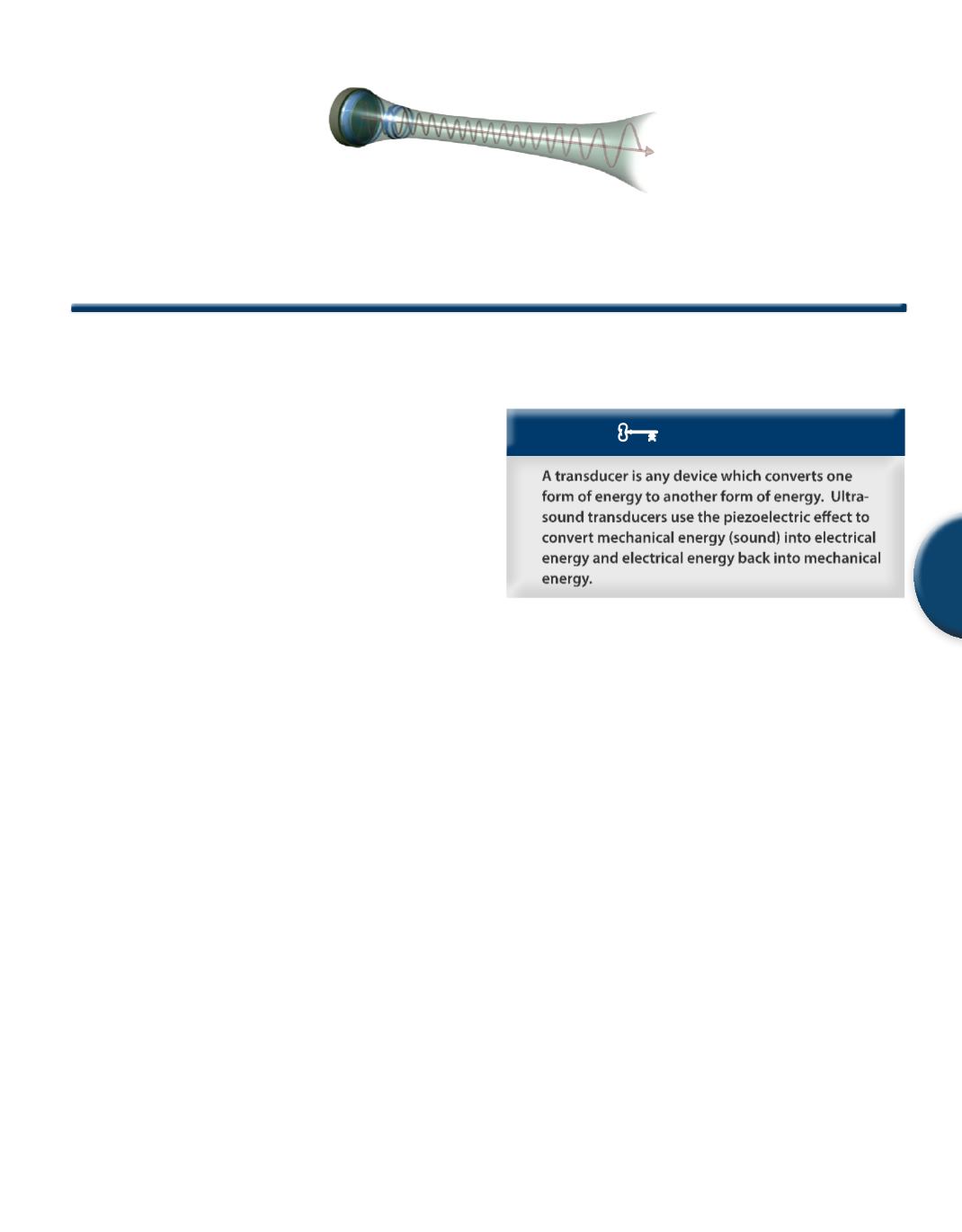
Transducers
Chapter 5
Chapter 5: Transducers
99
5
Introduction
In Chapter 2 we discussed waves and the parameters that define a
sound wave useful for diagnostic testing. In Chapter 3,we discussed
the interaction that occurs between the mechanical wave of sound
and the medium, responsible for ultimately returning the signal
back for interpretation. In Chapter 4, we discussed various timing
schemes so as to achieve the desired axial resolution. You will note
that there was no discussion specific to the device responsible for
producing these waves which interact with the patient to produce
time variant signals for processing and interpretation. The ap-
proach not to discuss this topic is very deliberate. It is very difficult
to discuss the specifics of a complex device before you understand
the requirements for the device. Since we now know some of the
parameters that are desirable for a wave,we are now ready to discuss
these devices called transducers.
The subject of “transducers” is very broad. Since there are many
different types of transducers and many different applications for
transducers,we will start by discussing in Level 1 the basic principles
and general theory. Level 1 is designed to teach the rudimentary
principles without encumbering the reader with specifics about
transducer application in clinical ultrasound. Once the general
aspects are understood, Level 2 will discuss specific transducer
designs, advantages and disadvantages of various technologies, and
applications. Level 2will be structured in a uniquemanner,following
the technology development path from the early days through the
most advanced present day designs. The hope is that by splitting
the material into two distinct sections (the theory in Level 1, and
the application in Level 2), we will significantly reduce the amount
of confusion which arises from the many permutations and interac-
tions between the types of transducers, the application of various
transducer types, the benefits and limitations to each design, and
the desired features and technology driving the future.
The importance of learning about transducers must be stressed.
Aspects of the transmitted wave directly affect the quality of the
scan, what modalities can be performed, and the risk of bioeffects.
Since the transducer and transducer design directly affect the beam,
it is logical that understanding transducer theory and function will
be critical to performing a good clinical diagnostic ultrasound test
on a patient.
KEY CONCEPT
1. Transducer Basics
1.1 Transducers Defined
A transducer is any device which converts energy from one form to
another. Using the meaning of the prefix in the definition, a trans-
ducer is a device which converts energy across the device from one
form to another form. There are many forms of transducers in the
world. Do not make the mistake of defining the word too narrowly
to only mean “ultrasound” transducers.
1.2 Examples of Transducers
◊
Examples:
microphones
stereo speakers
temperature sensors (thermocouples,
thermistors)
light bulbs
lasers
eyes
ears
nerves
1.3 Ultrasound Transducers and Bi-directionality
To be specific, an ultrasound transducer utilizes the properties of
piezoelectric materials to convert electropotential energy (voltage)


